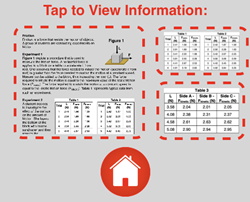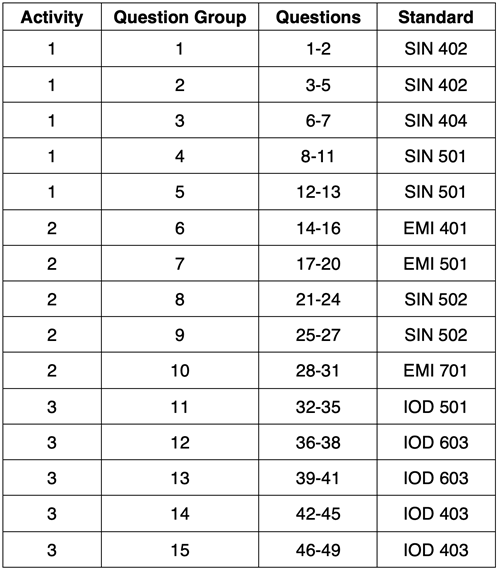About the Science Reasoning Center
 Highly Recommended
Highly RecommendedLike all our Science Reasoning Center activities, the completion of the Friction activity requires that a student use provided information about a phenomenon, experiment, or data presentation to answer questions. This information is accessible by tapping on the small thumbnails found on the bottom right of every question. However, it may be considerably easier to have a printed copy of this information or to display the information in a separate browser window. You can access this information from this page.
The Standards
The Friction activity describes a complex set of three experiments exploring the effect of several variables upon the amount of friction experienced by a wooden block dragged across a surface. Data is presented in the form of three different data tables. The activity requires that students understand the experimental design, recognize the effect of one variable on another, extrapolate from the provided data in order to predict the result of conducting additional trials, and represent the data in the form of a graph. Success with the activity requires some degree of understanding or proficiency with respect to ...
- Developing and Using Models (Science and Engineering Practice 2.6)
Develop and/or use a model (including mathematical and computational) to generate data to support explanations, predict phenomena, analyze systems, and/or solve problems. - Analyzing and Interpreting Data (Science and Engineering Practice 4.1)
Analyze data using tools, technologies, and/or models (e.g., computational, mathematical) in order to make valid and reliable scientific claims. - Patterns (Crosscutting Concept 1.1)
Different patterns may be observed at each of the scales at which a system is studied and can provide evidence for causality in explanations of phenomena.
While the Friction activity addresses the two NextGen Science and Engineering Practices and the Crosscutting Concepts above, the activity drew its greatest inspiration from ACT's College Readiness Standards for Science Reasoning. The activity consists of 49 questions organized into 15 Question Groups and spread across the three activities. All three strands (Interpretation of Data - IOD; Science Investigation - SIN; and Evaluation of Models, Inferences, and Experimental Results - EMI) of the College Readiness Standards are addressed in this activity. The code given for the standard includes three letters to indicate the strand and three numbers to indicate the specific standard within that strand. Higher numbers are indicative of more complex science reasoning skills. The relationship between the questions and the standards is as follows:

Complementary and Similar Resources
The following resources at The Physics Classroom website complement the Friction Lab Science Reasoning Activity. Teachers may find them useful for supporting students and/or as components of lesson plans and unit plans.
Physics Video Tutorial, Newton's Laws: Friction
Physics Interactives, Newton's Laws: Force Simulation
The Calculator Pad, Newton's Laws: Problem Sets NL11 - NL13
Recommended: Print Passage, Tables, and Graphs
Also see: